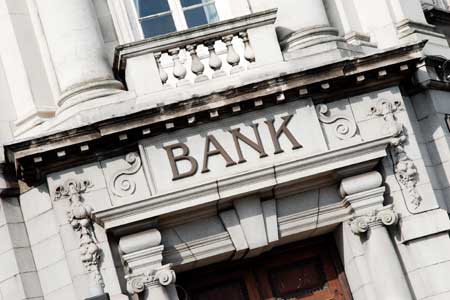Credit-card losses are outpacing auto and home loans at a rate not seen in at least a decade. The question is whether banks’ plastic problem is an outlier or an omen.
For now, there’s no cause for panic. The strong U.S. economy and low unemployment means most consumers are able to stay current on debt payments — new foreclosures and bankruptcies fell to the lowest level in at least 15 years in 2018. Yet the uptick in card losses is unmistakable. Credit-reporting company Experian Plc said some of the blame goes to banks offering credit to riskier borrowers, and the Federal Reserve has noted a spike in late payments by the elderly.
Plastic Problem
More credit-card debt is becoming seriously delinquent
Source: Federal Reserve
“We do see card delinquencies a little higher and a slight uptick in the most recent couple of quarters,” Matt Komos, TransUnion’s vice president of research and consulting, said in an interview, adding that he doubts the trend is a harbinger of bad news for banks. “Delinquencies, while moving upward, are probably hitting a more normal level for the amount of credit that’s out there.”
Read more about card charge-offs reaching a seven-year high
The four largest U.S. banks had almost $4 billion in charge-offs from credit cards last quarter, and just $656 million from all other consumer lending. That’s the biggest gap since at least 2009. Card charge-offs now make up more than 80 percent of total consumer credit costs, up from 67 percent three years ago.
Charged Up
Card losses are a growing percentage of banks’ total charge-offs
Source: Data compiled by Bloomberg
While the card losses are noteworthy, they’re not enough to drag down what’s been an otherwise a stellar run of profits at the top lenders. JPMorgan Chase & Co. said last month that profit from its consumer division jumped 19 percent in the first quarter, while at Bank of America Corp. that figure surged 25 percent.
Big banks are also stressing that loss levels aren’t outside the range they expected. Some of the deterioration in credit quality comes from growth: Lenders have piled into credit cards in recent years while pulling back on auto and student loans. Bank of America and JPMorgan, two of the largest U.S. mortgage providers, posted recoveries of delinquent debt in their residential home-loan portfolios in the first quarter.
There are signs the banks are getting more selective. The share of card accounts going to those with super-prime credit scores is near a three-year high, according to data from the American Bankers Association.
“For us, the U.S. consumer has always been strong and confident, and even if we’re not at all-time highs in confidence, we’re still very high,” JPMorgan Chief Financial Officer Marianne Lake told investors in April. “Generally, the data is — even some like housing and autos that hasn’t necessarily been super strong — is looking encouraging.”
While provisions tied to consumer loans made up the majority of major banks’ credit costs in recent years, investors have grown increasingly wary of deteriorating commercial credit. Some bank executives have warned of the growing influence of non-banks in the leveraged-lending market, for example, while others have cautioned against the risk of “fallen angels,” or bonds rated in the BBB zone that get downgraded to junk.
And as credit costs increase, many of the biggest banks in the U.S. are also experiencing a slowdown in spending on their cards, meaning they’ll reap fewer of the fees they charge merchants whenever a consumer uses their card at checkout.
Spending Slowdown
Growth in card spending at the five largest U.S. credit-card issuers
Source: Bloomberg Intelligence
“We see solid overall economic growth with some slight moderation,” Sachin Mehra, CFO for Mastercard Inc., said in an interview. “We’re still monitoring a number of items as it relates to the economy, such as ongoing trade negotiations and other economic and political factors that could impact growth over the longer term.”
(Adds industry data in eighth paragraph. An earlier version of this story corrected first-quarter card spending growth in last chart.)
The iShares U.S. Financials ETF (IYF) was unchanged in after-hours trading Wednesday. Year-to-date, IYF has gained 5.02%, versus a 9.79% rise in the benchmark S&P 500 index during the same period.
IYF currently has an ETF Daily News SMART Grade of A (Strong Buy), and is ranked #5 of 36 ETFs in the Financial Equities ETFs category.
This article is brought to you courtesy of Bloomberg.

